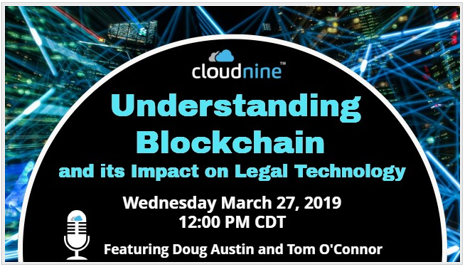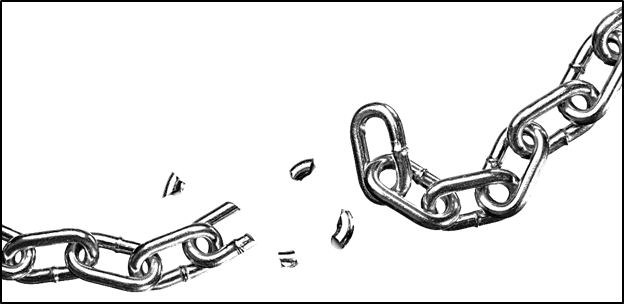Today is the Day to Learn about Blockchain and How it Impacts Legal Technology: eDiscovery Webcasts
If you think you’re hearing more and more about blockchain and bitcoin, you’re probably right. Blockchain is even being discussed as having potential application in legal technology and electronic discovery. But, what exactly is it? How does it work? And, how do you need to be prepared to address it as a legal professional? Today’s webcast that will answer those questions – and more!
Today at noon CST (1:00pm EST, 10:00am PST), CloudNine will conduct the webcast Understanding Blockchain and its Impact on Legal Technology. In this one-hour webcast that’s CLE-approved in selected states, we will discuss, define and describe blockchain and how it can apply to legal technology and eDiscovery today and in the future. Topics include:
- History of Blockchain and Bitcoin
- Defining Key Terms
- How Blockchain Works
- Advantages and Challenges of Blockchain
- Smart Contracts and Other Use Cases for Blockchain
- Impacts of Blockchain on Legal Technology and eDiscovery
- Is Blockchain Really as Secure as People Think?
- Future of Blockchain
- Resources for More Info
As always, I’ll be presenting the webcast, along with Tom O’Connor, whose white paper of the same name was published on this blog a few weeks ago. To register for it, click here. Even if you can’t make it, go ahead and register to get a link to the slides and to the recording of the webcast (if you want to check it out later). If you want to learn about blockchain and how it can affect your job as a legal professional, this webcast is for you!
So, what do you think? Do you know the ins and outs of blockchain or even how it works? If not, please join us! If so, please join us anyway! And, as always, please share any comments you might have or if you’d like to know more about a particular topic.

Sponsor: This blog is sponsored by CloudNine, which is a data and legal discovery technology company with proven expertise in simplifying and automating the discovery of data for audits, investigations, and litigation. Used by legal and business customers worldwide including more than 50 of the top 250 Am Law firms and many of the world’s leading corporations, CloudNine’s eDiscovery automation software and services help customers gain insight and intelligence on electronic data.
Disclaimer: The views represented herein are exclusively the views of the author, and do not necessarily represent the views held by CloudNine. eDiscovery Daily is made available by CloudNine solely for educational purposes to provide general information about general eDiscovery principles and not to provide specific legal advice applicable to any particular circumstance. eDiscovery Daily should not be used as a substitute for competent legal advice from a lawyer you have retained and who has agreed to represent you.



